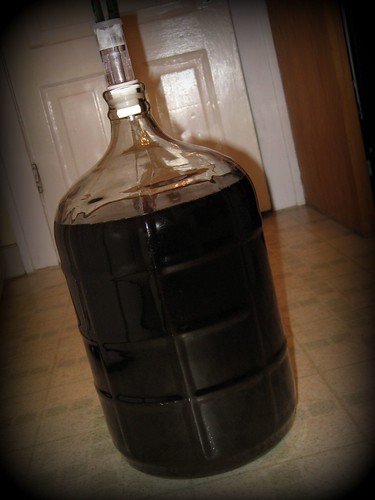Now that we’ve pressed the juice out of our grapes it’s time to turn it into something more fun. Namely, alcohol! To do this we need to employ the help of our new best friend Saccharomyces Cerevisiae (yeast).
A Little Background on Yeast
Yeasts are tiny little organisms that reproduce through cell division. There are over 1,500 different species of yeast but we are mainly interested in a single variety, S.C. Other yeast are capable of turning grape juice into wine, however, they often result in off or spoiled flavors.
The yeast gets energy from the sugar in our grape juice. In return for feeding these little guys they produce alcohol and CO2. While we don’t have much use for the CO2 in still wine, it is a critical part of creating sparkling wine.
Here’s a rough representation of what the yeast are doing.
C6H12O6 → 2CH3CH2OH + 2CO2
Roughly because this equation assumes that the yeast do not multiply (they do), and that no alcohol (ethanol) is lost to evaporation. Thus this is a simplification of what’s really going on in your fermenter.
While you can ferment grapes with wild yeasts that occur naturally in the vineyard, the problem is you don’t know if that yeast is hearty enough to complete the fermentation. This brings us to how fermentation stops.
Starting Fermentation
The best way to get a strong fermentation going is to prepare a yeast starter. This will ensure that your fermentation starts with a bang and is more likely to go to completion.
Preparing a yeast starter is quite simple. You take warm water and mix the yeast in, add a little food for the yeast, and give them time to reproduce into a thriving population. The specifics can differ from strain to strain but you get the general idea of what’s going on.
Once the yeast is awake and going you add this to your grape juice and let them go to work!
The Completion of Fermentation
Fermentation stops when the yeast have either consumed all of the sugar in the must, or the alcohol level has gotten too high for the yeast to survive. As winemakers it is our job to pick a yeast that will live long enough to completely convert all sugar into alcohol and CO2.
Having left over sugar is not what we want. It results in a sickly sweet wine for the most part. Now there are times when you do want to have some left over sugar but not much. Alcohol produced in this manner can taste sweet in and of itself, without the need for sugar.
Thus it is very important to measure the sugar content of your grapes or must prior to fermentation. Knowing how much sugar you have tells you what your alcohol content should be after a complete fermentation. With this knowledge you can select a strong enough strain of yeast to do the job.
Things to Consider at the Fermentation Stage
1. Keep your fermentation container and all of your tool and utensils sterile at all times. As mentioned before there are many kinds of yeast, some wild, that can start fermenting your grape juice before you’ve added your own yeast.
To remedy this keep everything clean. You may even want to inoculate (to be covered soon) prior to adding your yeast to kill off any bacteria or undesirable strains of yeast.
2. The temperature of your starter and of your must is critical. Lower temperatures result in a slower fermentation. Higher temperatures can result in cooked flavors, a fast fermentation, or killing off your yeasts before they’ve done their job.
There are different temperature ranges for different strains of yeast and for different styles of wine. Pay close attention to the recommendations of yeast distributors. As a general rule of thumb, white wines should be fermented between 64 and 68 degrees F while red wines may be fermented up to 85 degrees F.
Master Wine Maker’s Tip
For a more complex flavor profile ferment half of your grapes with one yeast and the other half with another yeast. Keep them in separate containers until after fermentation has stopped. At this point you can blend the two back together and create a unique flavor profile that shares the intricacies of each yeast.
Click here to go back to the wine making process.
Photo by Jim Lynch


4 Replies to “Fermenting Juice into Wine”
Comments are closed.